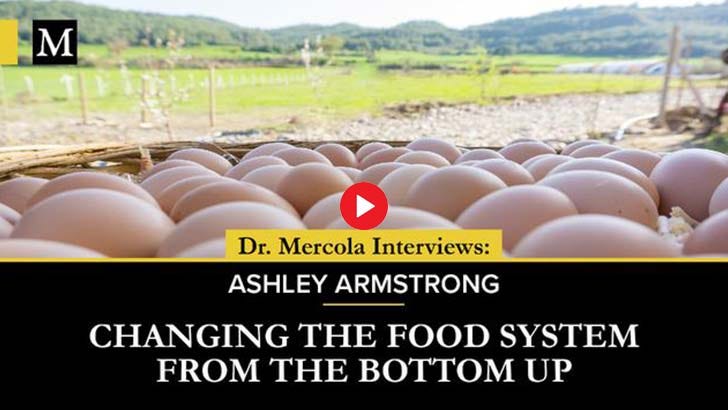[ad_1]

Weblog
Past the creamy texture and wealthy flavors lies a story of genetic modification and company affect.
March 1, 2024 | Supply: Dr. Mercola’s Censored Library | by Ashley Armstrong
STORY AT-A-GLANCE
- Historically, cheese was made with simply 4 components: milk, salt, starter tradition and animal rennet
- Rennet is used as a clotting agent to curdle the milk into cheese, separating the liquid components of milk from the solids. It’s a necessary a part of the cheese making course of
- In the present day, there are 4 forms of rennet used within the cheese making business: animal rennet, vegetable rennet, microbial rennet, and a genetically modified model referred to as FPC (fermentation-produced chymosin), made by Pfizer
- Bioengineered chymosin (FPC) was granted Usually Thought to be Secure (GRAS) standing, which exempted Pfizer was exempt from the pre-approval necessities that apply to different new meals components. This even if research have detailed considerations about security
- An estimated 90% of North American cheese is made with FPC rennet, and ingredient labels don’t distinguish between bioengineered rennet and the unique animal-based sort so shoppers haven’t any means of realizing what they’re consuming
On this article let’s dive into why I imagine it is best to solely be consuming cheese made with ANIMAL RENNET, and the way over 90% of the cheese bought within the U.S. doesn’t use this and as a substitute makes use of a genetically modified model made by Pfizer.
Cheese Historical past
Who doesn’t love cheese?! And for good cause — it isn’t solely scrumptious but in addition extremely nutritious. And regardless of what mainstream tells us, people have been making and consuming this superfood for over 7,000 years.1, 2, 3 In truth, cheese serves an vital position in human historical past.
Historians doc that milk, dairy and fermented dairy merchandise, like cheese, served as a nutrient-dense calorie supply that was storable, permitting among the first explorers to soundly journey and develop communities, creating extra demographic shifts and various farming communities.
“Dairy supplied meals safety, as it’s a nutrient-rich superfood.
Consumption of milk and dairy merchandise would have had many benefits for early farming populations. Milk, yogurt, and cheese are good sources of energy, protein, and fats. They supply a dependable meals between harvests or throughout droughts, epidemics, or famines.
Milk is a comparatively pathogen-free supply of fluids that might be important throughout instances of water shortage. Cheese gives a way of storing these vitamins for use when milk manufacturing is low, and will be simply transported.
Moreover, fermentation of milk into yogurt or cheese lowers lactose content material and permits lactose illiberal people to reap the advantages, whereas keep, or in some instances enhancing, different important vitamins reminiscent of fats and calcium.”4
However cheese was historically made with simply these 4 components:
- Milk
- Salt
- Starter tradition, what’s used to make the specified cheese pressure (for ex. Muenster versus Swiss)
- Animal rennet, used as a clotting agent to curdle the milk into cheese, separating the liquid components of milk from the solids — a really very important a part of the cheese making course of!
You add tradition to take advantage of and let it ferment. Then, you add rennet, which separates the milk into curds and whey. Then you definitely press the curds and age them. And voila — cheese!
Rennet is a posh set of enzymes which can be naturally produced within the stomachs of ruminant animals, like cows. The primary enzyme current is chymosin, which is a protease enzyme, which means it breaks down protein. Rennet from animals additionally comprises different enzymes like pepsin and lipase.
So these enzymes in rennet goal casein, the principle protein in milk. They trigger the casein molecules to divide and re-coagulate into even bigger clumps, forming cheese curds. So, rennet serves as an important a part of cheesemaking because it helps curdle the milk into cheese, separating the liquid half from the stable half.
Forms of Rennet
There are 4 forms of rennet used within the cheese making business: animal rennet, vegetable rennet, microbial rennet, and FPC (a GMO model).
- Animal rennet — Animal rennet is probably the most pure and oldest type of rennet, and what was historically utilized in cheese making. There are milk-clotting enzymes naturally occurring within the abdomen lining of ruminant animals. It’s well-known within the cheese making business that animal rennet produces a superior taste, probably as a result of this rennet is a posh set of enzymes (as nature meant), moderately than a single remoted enzyme derived in a lab.
Animal rennet is normally 90% chymosin enzyme and 10% pepsin enzyme. The small quantity of pepsin will break down the casein protein in milk in a barely completely different means in comparison with simply chymosin alone, producing a remaining product with an enhanced style.
Cheese made utilizing animal rennet not solely tastes higher, nevertheless it additionally produces a safer and extra pure remaining cheese product, which will probably be mentioned in depth under.
- Vegetable rennet — One various to animal rennet is vegetable rennet, which sadly varies so much relying on the supply, and the time period “vegetable rennet” is misused so much. True vegetable rennet is derived from vegetation that possess coagulation enzymes. And these plant extracts have been used as milk coagulants since historic instances. Some examples embody cardoon thistle, fig tree bark, or nettles.
Nevertheless, it’s well-known within the cheese business that vegetable rennet can negatively influence the ultimate texture and taste of the cheese.5, 6
“Most plant-derived [enzymes] sometimes exhibit low MCA/PA ratios leading to poor cheese yield and formation of bitter substances throughout cheese ripening … Subsequently, most of them should not appropriate for cheese manufacturing.”7
Which is why many of the cheese with the label “vegetable rennet” isn’t actual vegetable rennet. It’s both microbial rennet (constituted of mould) or FPC (the GMO model) since there isn’t a regulation on the phrases used for what rennet is utilized in cheese labeling.
- Microbial rennet — One other various to animal rennet is “microbial rennet,” the place the coagulating enzymes are produced by a selected sort of mould, fungus or yeast organism grown and fermented in a lab setting (usually fed soy). Yum. So whereas the microorganisms aren’t genetically modified, their meals supply probably is.
That is thought of vegetarian pleasant because the enzyme produced by the organism shouldn’t be derived from an animal. There may be once more a big consensus within the cheesemaking world that cheeses made with the sort of microbial rennet can result in a remaining cheese product with a bitter style. This feature is usually utilized in “licensed natural” and “licensed vegetarian” cheeses.
“Microbial [enzymes] are primarily produced by fungi and micro organism within the means of progress and metabolism. Microorganisms have some great benefits of a brief progress cycle, straightforward fermentation, and should not restricted by house and area of manufacturing …
Subsequently, the price of microbial MCEs is low … Nevertheless, it’s discovered that the majority MCEs [microbial enzymes] have excessive PA and low MCA/PA ratios resulting in low cheese yield and bitterness.”8
- Genetically modified FPC — To beat among the shortcomings of the vegetable and microbial rennets just like the potential bitter cheese style, scientists have leveraged genetic engineering know-how to create new, genetically modified species that generate these milk-curdling enzymes.
Introducing the commonest various to animal rennet in cheese making — FPC, which stands for Fermentation-Produced Chymosin (FPC). (Chymosin referring to the enzyme that curdles milk, and is of course current within the abdomen lining of ruminant animals).
In truth, 90% of the cheese manufactured within the U.S. makes use of these enzymes from genetically modified organisms.9
FPC was created by the one and solely Pfizer (biotech firm) and is made doable by utilizing CRISPR gene enhancing know-how10 the place the genomes of residing organisms are modified. The “security” of FPC was evaluated by a 90 day trial in rats.11
How FPC Is Made
Right here’s how it’s made: The rennet producing gene is taken out of the animal cell’s DNA string after which inserted into the micro organism, yeast or mould host cell’s DNA string in a course of often known as gene splicing (a sort of recombinant DNA know-how). As soon as inserted, the newly positioned gene initiates the manufacturing of the chymosin enzyme inside the host. The host tradition is then cultivated and fermented.
These recombinant DNA applied sciences are comparatively new and have become fashionable within the 1980s when the U.S. Supreme Court docket by a 5-Four vote dominated that new life varieties will be patented.12 So then in 1990, in one other precedent-setting determination by a U.S. authorities workplace, the FDA authorized the usage of FPC in meals. It was the primary time a bioengineered product was permitted in meals within the U.S. It will get higher.
This bioengineered chymosin (FPC) was granted Usually Thought to be Secure (GRAS) standing. Which means, Pfizer was exempt from the pre-approval necessities that apply to different (non GRAS) new meals components.
Since Pfizer demonstrated what’s sometimes called “substantial equivalence,” the FDA concluded that bioengineered chymosin was considerably equal to calf rennet and wanted neither particular labeling nor indication of its supply or technique of manufacturing.
In case you didn’t know, this “GRAS” label is a bit hand wavy and only a large loophole. Typically, federal legislation requires the FDA to make sure that meals components are secure and mandates a rigorous pre-market security assessment course of. However the loophole = GRAS.
The GRAS Loophole
Forty-three p.c of meals components are designated “GRAS” and don’t get FDA oversight. Basically, we should belief that meals firms will conduct unbiased security determinations earlier than including these new GRAS substances to our meals.
“In keeping with the FDC Act, meals components which can be non-GRAS want approval previous to advertising. In distinction, GRAS substances don’t require approval or notification to the USFDA previous to advertising.”13
Which means the general public and different regulatory companies lack the information wanted to evaluate the security of some chemical substances in our meals. In 2014, Former Deputy FDA Commissioner for Meals Michael Taylor commented on FDA’s failure to manage meals chemical substances, saying:14 “We merely do not need the data to vouch for the security of many of those chemical substances.”
GRAS could have began out with good intentions, nevertheless it has turned out to be an enormous loophole for meals firms to get a free move to make use of chemical components in our meals with little to no oversight. And naturally, there isn’t a different developed nation on this planet that has a system as archaic as GRAS for approving meals components. Okay tangent apart, again to FPC.
FPC Cheese Is Besides From GMO Labeling
Though the organisms that produce this FPC are genetically modified, dairy merchandise utilizing this know-how are exempt from having to label their merchandise as “GMO.” In truth, FPC is simply listed as “microbial rennet” or “vegetable rennet” on labels. (The supply of the rennet shouldn’t be required to be listed). So it’s a little deceiving.
The “Non-GMO” nationwide venture doesn’t agree with this FPC know-how and believes this can be a high-risk ingredient. Furthermore, FPC shouldn’t be permitted in USDA Natural cheeses. And here’s a remark from the American Cheese Society:
“FPC rennet is a genetically modified organism (GMO). In keeping with the tradition firms, 90% of North American cheese is made with FPC rennet. However ingredient labels don’t distinguish between the sort of microbial rennet and the unique non-GMO sort.
And the truth that use of FPC-type microbial rennet shouldn’t be labeled a GMO leaves those that oppose GMOs at midnight with regards to selecting cheese.”
And as soon as once more, FPC is utilized in 90% of the cheese made within the U.S.! These various rennet strategies are as much as 2X cheaper than utilizing animal rennet, because it hurries up the growing older course of to make cheese prepared for market sooner, which suggests extra income.
In addition they permits cheese firms to market to vegetarians (since animal rennet, derived from the abdomen of a ruminant animal, wouldn’t be allowed). However is FPC secure?
Security Issues of GM Enzymes
Properly, once more, this know-how is new. So there are not any long run research evaluating the security of consuming a small quantity of this genetically modified meals additive each single day.15 However there are two principal considerations: 1) toxicity and a pair of) digestive points since these rennet alternate options can function an allergen.16
Toxicity Issues
Toxicity which means that the enzyme resolution comprises bio toxins from the genetically modified host (mould or fungus) that’s being cultured and fermented within the lab. The producers of those enzymes declare the ultimate FPC enzyme resolution is extremely purified, however some individuals react as if they nonetheless comprise among the allergens from the host microorganisms themselves.
In truth, traces of the genetically engineered micro organism have been present in enzymes.17 A couple of quotes from the literature concerning these toxicity considerations. I don’t learn about you, however I’ve no need to devour bio toxins from genetically modified organisms!
“Genetically modified meals enzymes are at the moment produced from GMOs. Security considerations have been raised concerning potential contamination of meals with bacterial toxins or mycotoxins, allergens, or uncharacterized extraneous substances as impurities.”18
“As a result of these enzymes are purified from microbial sources, poisonous substances is likely to be current in enzyme preparations/isolates. The poisonous substances are principally bacterial toxins and mycotoxins, which could trigger issues/dangers associated to the well being of shoppers.
Security laws can be very a lot attentive concerning the allergenic properties of manufactured enzymes, as it’s well-known that enzymes are potent inhalative sensitizers.
Aside from that, quite a few uncharacterized extraneous substances/ impurities of microbial/organic origin may additionally be current within the enzyme preparation, which can be a matter of prime concern whereas evaluating the security of economic enzyme merchandise.”19
“Whereas meals enzyme preparations are thought of unlikely to trigger any acute toxicity, genotoxicity, or repeat-dose oral toxicity, it’s the fermentation product(s) of microorganisms from the manufacturing course of that’s/are of curiosity as a result of potential presence of secondary metabolites that will induce toxicity when ingested (eg. aflatoxins, fumonisins and/or ochratoxins).”20
So, some are involved about steady ingestion of those bio toxins over time, and the unfavorable well being penalties these would have over the course of years. And sadly, there isn’t a lot regulation right here. “At present, the businesses themselves are liable for the standard management of their merchandise.”21 Gee, that’s not useful!
Allergens and Digestive Points
So because of a small quantity of those toxins probably exhibiting up within the remaining cheese product (and slight structural modifications within the remaining proteins), the cheese can now function an allergen and may trigger an allergic response, or digestive and respiratory points.22
- Abdomen upset or discomfort
- Runny nostril, enhance in mucus manufacturing
Customers then might imagine they’ll’t digest cheese — however hey, possibly it’s simply the cheese that was made! It might not be the dairy itself, however the microorganism residues that elicit an allergic response, or irritate the intestine lining.
I personally don’t digest cheese that’s made with this FPC (which once more will be “vegetable rennet” or “microbial rennet” on labels). I get abdomen upset and a disruption of my regular bowel actions. So one thing isn’t going proper there! I can solely digest cheese made with animal rennet, so I’m very choosy with what cheese I devour each day!
GMO Cheese Might Compromise Your Intestine Well being
One of many largest points right here is the potential disruption of the intestine microbiome.
“Lastly, the case examine highlights the problems associated to the dissemination of [antimicrobial resistance] genes as a result of their potential acquisition by the human commensal flora, by way of direct meals consumption and by environmental micro organism via contact with soil and water surfaces or meals waste. That is particularly the case as a residing GMM [genetically modified micro-organism] was present in a FE [enzyme] preparation.”23
As well as, allergic responses from ingesting the biotoxin residues or modified protein constructions.
“A recognized security danger linked to industrial enzyme use is respiratory allergy and for many proteases there may be additionally some potential for pores and skin and eye irritation … Enzymes current a danger of a respiratory allergy (e.g. Aspergillus-derived enzymes in bakers’ bronchial asthma) and it’s nicely described within the scientific literature …”24
“Genetic modification of enzymes may additionally change their allergenic properties, posing new potential well being dangers. As an illustration, sort I sensitization was present in a examine of 813 uncovered industrial employees utilizing genetically modified enzymes.”25
So, it’s documented within the literature, I expertise it personally, and have heard from a number of different individuals — some individuals have digestive points digesting the microbial and vegetable rennets. However do exactly high quality with cheese made in a standard method with animal rennet. There are penalties after we attempt to outsmart nature!
Our Cheese
So, you probably have beforehand had digestive points or allergy-like reactions to cheese, the kind of rennet could have been the problem, not the dairy itself! KNOW YOUR DAIRY!
Our cheese at Nourish Cooperative shouldn’t be solely made with uncooked, A2A2 milk, however we ONLY use animal rennet in all of our cheese varieties — resulting in simpler to digest, NON GENETICALLY MODIFIED, nourishing and scrumptious cheese. We choose that cheese is made the standard means, as nature meant. So should you don’t digest different cheeses nicely, you possibly can probably digest ours simply high quality! KNOW YOUR FARMER AND KNOW YOUR CHEESE INGREDIENTS!
We’re quickly accepting new members to our farm cooperative, the place we ship the very best cheese (together with meat, dairy and sourdough) to all 50 states. Be a part of the waitlist right here: nourishcooperative.com.
About Angel Acres Egg Co. and the Nourish Cooperative
Ashley Armstrong, with a Ph.D., MS and BS in mechanical engineering and a licensed private coach, is the cofounder of Angel Acres Egg Co., which focuses on low-PUFA (polyunsaturated fats) eggs. We discussed the importance of low-PUFA eggs in a recent interview, embedded above to your comfort.
Angel Acres ships their eggs to all 50 states — however there may be at the moment a ready listing as she slowly will increase the variety of chickens inside the community to meet the demand. If you wish to buy low-PUFA eggs from Armstrong’s farm, be part of the ready listing at angel-acresfarm.com/pages/waitlist-for-eggs. Extra egg containers opening up this spring!
Disclaimer: All the contents of this web site are primarily based upon the opinions of Dr. Mercola, except in any other case famous. Particular person articles are primarily based upon the opinions of the respective creator, who retains copyright as marked.
The data on this web site shouldn’t be meant to switch a one-on-one relationship with a certified well being care skilled and isn’t meant as medical recommendation. It’s meant as a sharing of information and data from the analysis and expertise of Dr. Mercola and his group. Dr. Mercola encourages you to make your individual well being care selections primarily based upon your analysis and in partnership with a certified well being care skilled. The subscription payment being requested is for entry to the articles and data posted on this web site, and isn’t being paid for any particular person medical recommendation.
If you’re pregnant, nursing, taking treatment, or have a medical situation, seek the advice of your well being care skilled earlier than utilizing merchandise primarily based on this content material.
This article is posted in full with permission from Dr. Joseph Mercola.
The submit Genetically Modified Ingredients in Most US Cheeses appeared first on Organic Consumers.
[ad_2]
Source link






















